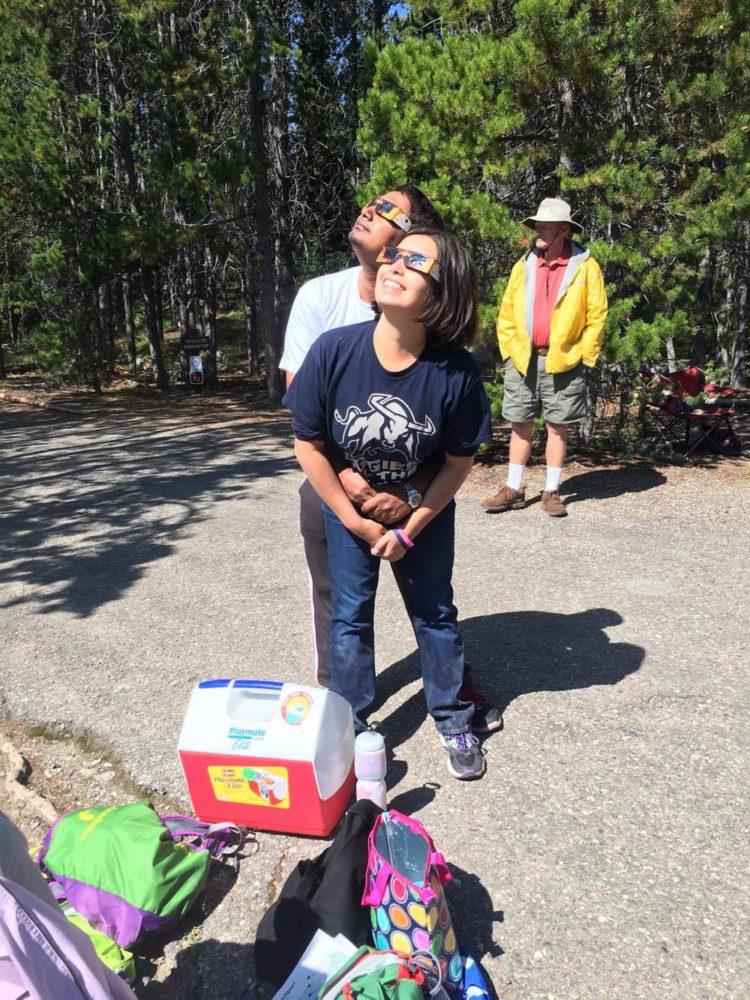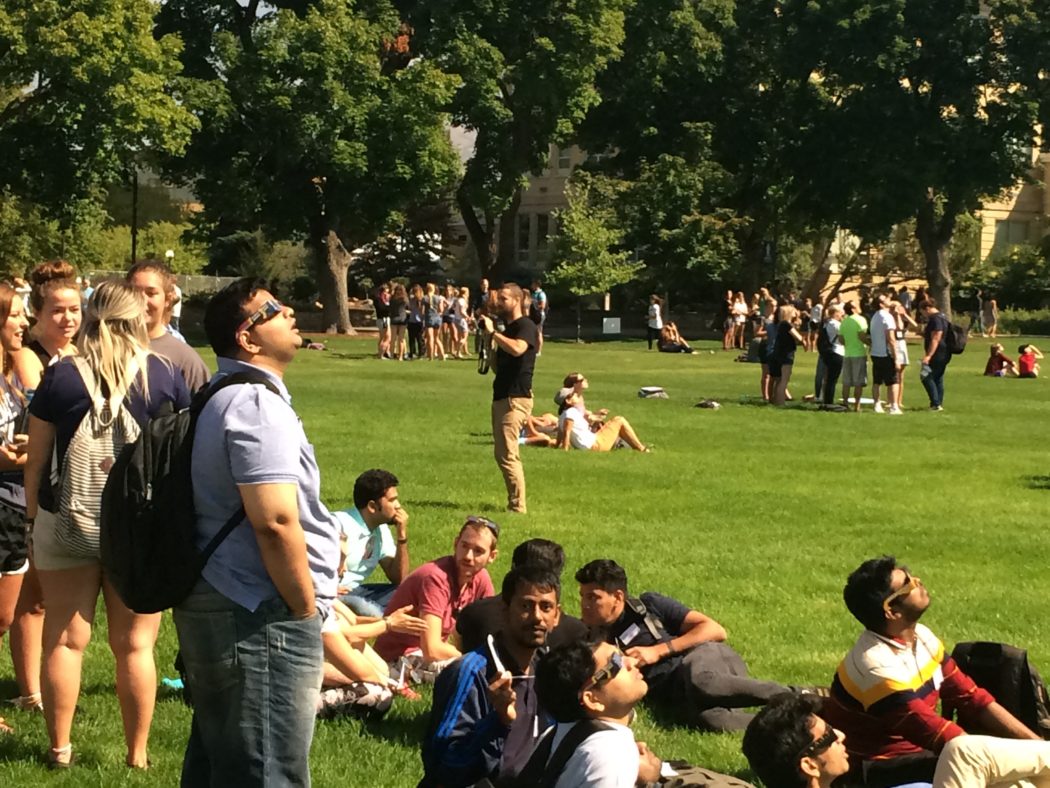A once in a lifetime eclipse
The most talked-about event of the summer occurred on August 21. Many were excited, some were skeptical, and others were questioning what the hype was all about.
At around 11:30 a.m., the moon crossed the sun in totality and caused most of North America to simultaneously stop in awe at an event most people only see twice, if not once, in their lifetime.
“It was such a unique experience to have everyone looking at one thing at the same time,” said Sara Sumsion, a student at Utah State University. “There’s something uniting about a rare phenomenon.”
The last total eclipse seen over the entire continental United States occurred in 1918. This year, its path of totality ran from Oregon to South Carolina.
To safely view the eclipse, millions of people watched the sky with special glasses. Those who didn’t have glasses were still able to see the crescent moon-shaped shadows the eclipse cast on the ground.
“I thought it was incredible,” Sumsion said. “It was so cool to see the shadows fall and the temperature drop.”
Sarah Ramos took her eclipse-viewing experience to the next level by driving to the Grand Teton National Park in Wyoming with her parents and her boyfriend, Anindya Bagchi.
 Sarah Ramos
Sarah Ramos “The eclipse was one of the most amazing natural beauties I have ever seen and experienced in my life,” Ramos said. “It was a very dramatic change from very bright outside and pretty hot to very chilly and dark without much light in the sky. We even saw stars, even though it was the middle of the day.”
Spectators flooded areas in the path of totality, disrupting normal travel and business routines. Idaho State University even postponed the first day of classes so students could enjoy the event.
Niall Thorley, a USU freshman, watched the eclipse in Logan.
”It was crazy, because I was out in a field alone when it started,” he said. “I was kind of blown away by what was happening, because I’ve definitely never seen anything quite like it. Part of the sun was just disappearing.”
For Thorley, the eclipse gave everyone a common experience to share. He said as a freshman it was intimidating to meet new people, but during the eclipse, everyone was on the same team.
Darby Biggs attended the Aggie Blue Leadership Conference and was on campus during the eclipse. During the peak of the event, she recalled all eyes turning to the sky to experience the natural phenomenon everyone had been talking about for weeks.
“After the peak, the Scotsman was played over a speaker system and everyone stopped what they were doing to sing along, as we do here at Utah State,” she said.
Biggs thinks this experience will get people excited for the next eclipse.
“I think because a total eclipse across the United States is so unique, it brought a lot of attention to the next eclipse in 2024,” Biggs said.
The next total solar eclipse to cross North America will occur on April 8, 2024. It will start in Mexico, pass through the U.S. from Texas to Maine, and end in Canada.
—kortni.marie.wells@aggiemail.usu.edu
@kortniwells

